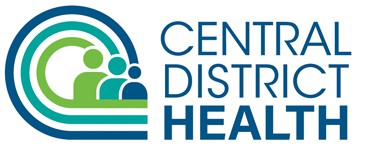Situation Summary
On May 3, 2020, the Centers for Disease Control and Prevention (CDC) changed the recommended duration of isolation for individuals (including healthcare personnel) with COVID-19 when a symptom-based strategy is used.
Information for all release of isolation strategies are provided below. These recommendations are based on the best information available at this time regarding viral load in upper respiratory specimens and culture of replication-competent virus, and the practical realities of an evolving pandemic. No policy decision will result in 100% certainty that all recovered individuals are no longer infectious.
Updated Symptom-Based Strategy for Release of Isolation
Isolation should be maintained for at least 10 days after illness onset (increased from 7 days) and at least 3 days (72 hours) after recovery. Recovery is defined as resolution of fever without the use of fever reducing medications with progressive improvement or resolution of other symptoms.
Symptoms of COVID-19 include cough, shortness of breath or difficulty breathing, fever, chills, muscle pain, sore throat, new loss of taste or smell and less commonly gastrointestinal symptoms. This list in not all inclusive as people with COVID-19 have had a wide range of symptoms and mild to severe illness.
Test-Based Strategy for Release of Isolation
A test-based strategy (if feasible) or a symptom-based strategy with more stringent requirements may be used for recovered individuals for whom there is low tolerance for post-recovery SARS-CoV-2 shedding and infectious risk because they are:
- Individuals who could pose a risk of transmitting infection to vulnerable individuals at high risk for morbidity or mortality from SARS-CoV-2 infection, OR people who support critical infrastructure
- Normally residing in congregate living facilities (e.g., correctional/detention facilities, retirement communities, ships) where there might be increased risk of rapid spread and morbidity or mortality if spread were to occur.
- Immunocompromised and may have prolonged viral shedding.
Under the test-based strategy, maintain home isolation until: - Resolution of fever without the use of fever-reducing medications and
- Improvement in respiratory symptoms (e.g., cough, shortness of breath) and
- Negative results of an FDA Emergency Use Authorized molecular assay for COVID-19 from at least two consecutive upper respiratory swab specimens collected ≥24 hours apart (total of two negative specimens)
Time-Based Strategy for Release of Isolation of Asymptomatic Individuals
A time-based strategy may be used for individuals who had laboratory confirmation of SARS-CoV-2 and who have not had any symptoms. Isolation is recommended for 10 days since the date of collection of the first positive molecular test.
Provider Resources on CDH Website
Central District Health maintains a number of provider and patient resources online related to COVID-19. For more information, visit COVID-19
Additional Resources:
Symptom-Based Strategy to Discontinue Isolation for Persons with COVID-19 https://www.cdc.gov/coronavirus/2019-ncov/community/strategy-discontinue- isolation.html
Criteria for Return to Work for Healthcare Personnel with Suspected or Confirmed
COVID-19 (Interim Guidance): https://www.cdc.gov/coronavirus/2019-ncov/hcp/return-
to-work.html
Ending Home Isolation for Immunocompromised Persons with COVID-19
https://www.cdc.gov/coronavirus/2019-ncov/hcp/ending-isolation.htm

